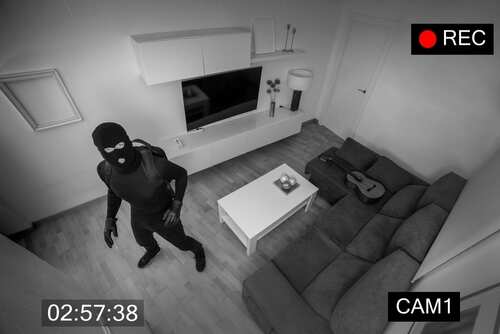When a Midwest mother faced a violent home invasion, her swift defensive action sent a powerful message to criminals and restored faith in the right to protect one’s family—even as progressive policies and liberal agendas have left many Americans feeling vulnerable.
Story Snapshot
- Home invasions remain a threat despite declining burglary rates in the Midwest and nationwide.
- A mother’s quick, decisive response highlights the importance of self-defense and preparedness.
- Economic and psychological impacts drive demand for security solutions and push for policy changes.
- Expert consensus supports proactive homeowner measures and community engagement as effective deterrents.
Homeowner Action Underscores Second Amendment Importance
In a quiet Midwest suburb, a mother demonstrated the critical value of the Second Amendment when she protected her family from a late-night intruder. She hid her baby in a closet and, when threatened, used her legally owned firearm to stop a violent criminal. This incident highlights how self-defense rights serve as the last line of defense against lawlessness, especially after years of left-leaning policies that have eroded public safety and emboldened criminals. The event stands as a reminder that family protection is a core American value, and attempts to undermine gun rights threaten the safety of law-abiding citizens.
While progressive officials often push for restrictions on firearms, real-world events like this confirm what conservatives have long argued: criminals do not respect gun-free zones or “woke” policies. The mother’s decisive action not only saved her own life but also prevented further harm to her child, underscoring the importance of ensuring citizens retain robust rights to defend themselves. The incident has catalyzed conversation throughout the community, with neighbors rallying behind the homeowner and demanding greater support for individual liberty over bureaucratic overreach.
Crime Trends and Community Resilience in the Midwest
Recent FBI and local law enforcement data show burglary rates in the Midwest have dropped by over 10% in recent years, with a further 19% decline in U.S. cities during the first half of 2025. This positive trend reflects enhanced community policing, increased awareness, and neighborhood watch programs. However, property crimes—including home invasions—persist, especially in suburbs previously viewed as safe havens. Only about one-third of households utilize security systems, leaving many families exposed. Policymakers and citizens alike are grappling with how to balance privacy and freedom with necessary security upgrades.
Midwest cities have seen up to 80% decreases in neighborhood crime over the past decade, largely due to targeted interventions and active community involvement. Despite these successes, isolated but severe incidents like this home invasion prove that vigilance must remain high. Law enforcement continues to urge homeowners to report suspicious activity and invest in security technology, while local leaders emphasize the benefits of collaborative efforts to strengthen community ties. The event has prompted renewed calls for responsible gun ownership and the expansion of neighborhood support networks.
Economic and Social Impact of Home Invasions
Home invasions carry substantial economic and psychological costs. The average household loss per incident is $2,661, factoring in stolen goods and property damage. Beyond financial harm, victims experience trauma and anxiety that can linger for years. Communities often respond to such incidents by increasing demand for home security systems and advocating for policy changes that prioritize safety over political correctness. Insurance companies may adjust premiums in areas with higher crime rates, creating further pressure for effective crime prevention strategies.
Mom hid her baby in closet then shot and killed burglar who broke into her home in peaceful suburb late at night https://t.co/WAzdzVfHrN
— Daily Mail (@DailyMail) August 18, 2025
Political impacts are equally significant, as conservative voters push for more funding for law enforcement and tougher penalties for offenders. The incident has reignited debate over the allocation of resources to police departments and the necessity of protecting constitutional rights. Socially, these events strengthen community solidarity, as neighbors band together to support victims and demand action from elected officials.
Expert Perspectives on Prevention and Preparedness
Security experts unanimously recommend alarm systems, window locks, and visible deterrents, noting that half of burglars abandon attempts when confronted with security measures. Criminologists emphasize the value of environmental design and proactive community policing, while law enforcement officials advocate rapid reporting and preparedness. Some experts call for increased self-defense training and legal protections for homeowners, aligning with traditional conservative values of personal responsibility and limited government interference.
Sociologists highlight the lasting psychological impact of violent crime and the importance of community support in recovery. While some advocate for non-confrontational responses, the consensus remains clear: decisive action and preparedness save lives. Homeowners and policymakers must resist efforts to erode constitutional rights in favor of policies that empower law-abiding citizens and strengthen family and community bonds.
Sources:
Home Invasion Statistics by State – ConsumerAffairs
Crime Trends in U.S. Cities: Mid-Year 2025 Update – Council on Criminal Justice
Click this link for the original source of this article.
Author: Editor
This content is courtesy of, and owned and copyrighted by, https://libertynewsalerts.com and its author. This content is made available by use of the public RSS feed offered by the host site and is used for educational purposes only. If you are the author or represent the host site and would like this content removed now and in the future, please contact USSANews.com using the email address in the Contact page found in the website menu.








